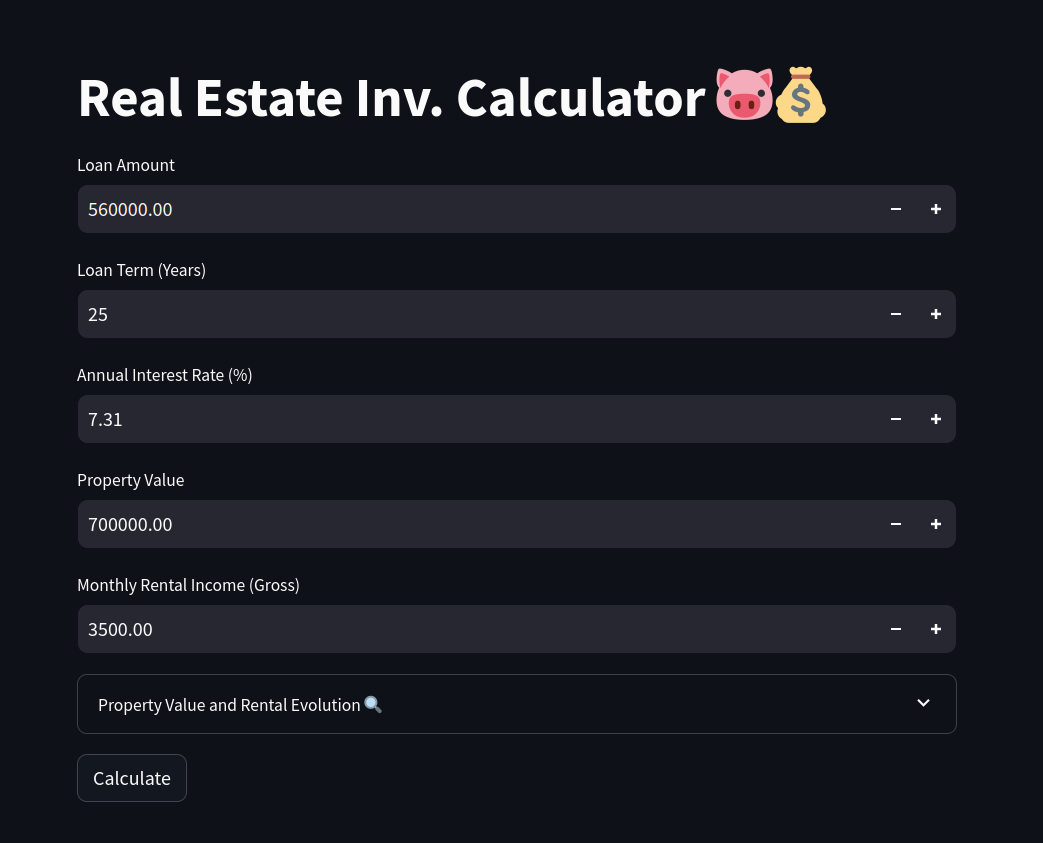Bootstrap and concepts for SoloPreneurs
TL;DR:
Collecting some interesting resources/concepts for entrepreneurs and indie hackers.
Do you have a supply or a demand problem?
And im not talking about FMCG.
+++ understanding offer types
+++ and that GTM is not quite same as marketing
+++ Should you dig gold or sell shovels?
Intro
When you are trying to build sth, it seems that we have more and more concepts to check: marketing, payment gateways with stripe and logins…
Because knowing how to use stripe + social sign in/ups on your landing and some vibe coding is just the start of the journey to actually sell sth.
Embedding cool widgets/chatbots/livechats will also NOT be enough. And nobody cares how you deploy.
Im talking about product more soft knowledge now.
How to pack the ideas so that they have a purpose to help people.
You can always get ideas from people that have cool experiences, like from their ebooks:
https://readmake.com/ for indehackers and builders
100M offers/leads/money models…
- Business Ideas from ebooks I read on the kindle
If it was only about ebooks today: We also have cool (and sometimes open) resources
I got inspired to write this post and created in public a way for any one to sell their ebooks:
But what should a solopreneur get to know for starters?
Resources for SoloPreneurs
https://github.com/EdoStra/Marketing-for-Founders or for engineers as we saw on this marketing post.
Reddit…
- Combine those with modern AI tools like Perplexity spaces:
https://www.perplexity.ai/spaces/yc-startup-advisoror https://www.perplexity.ai/spaces/build-best-in-class-yIy36UyQRCKzRt_L3NnWlw
Where to share
Creators of your favourite software are already doing so.
Like the creator of postIZ on reddit: https://www.reddit.com/r/selfhosted/comments/1mhhs94/postiz_v225_opensource_social_media_scheduling/
- Product Hunt, where you have an archive of the leaderboard: https://www.producthunt.com/leaderboard/daily/2025/8/13
Concepts
- BIP - build in public
- https://www.failory.com/blog/building-in-public
- Example from Ghost!
- https://ghost.org/about/ - With a graph showing their Annual Run Rate! A true open startup.
- MRR - monthly recurring revenue
This is the one that people call it ,passive income'
Not sure how passive it is to get it started. So personally, hearing from someone they are on passive income started to sound to me like a huge coasting the 9-5 and living on the weekends and or been financed by others.
Aaaanyways.
Entrepre-AI
Last year, I was outputting a bunch of ideas to do with some kind of all in one Aissistant at this post.
One section was made for entrepreneurs: some tips and tricks about neuromarketing etc

Havent you ever fell into one of those CTA’s?
And via the multi-chat project, I collected some general idea:
Time to put something together, for when you are about to build in public, create a waiting list…
CTA’s
- Quieres el premium? No, correre el riesgo!
- You don’t have to miss out
- They all laugh when…
- What sounds better than privacy?
- Is your Business performing at 100%? Here is the best/easiest way to find out
- Measure, Check, Act
- Blinded pa lazyness?
- A friend told me that this will fail as people on ig has really nothing to say
- Lets proove him wrong
Interesting catchy sentences:
- Pollo hecho en serio y no en serie
- Hay una casa para cada persona, hay una app para todas las casas.
- Lets sea
- We ve bean waiting for you (coffee)
- Make IT happen
- Fotografiamos historias de amor.
- La historia la escribís vosotros; nosotros la contaremos con imágenes.
Conclusions
You have now more than enough resources to share and get ideas to build.
Its easier than ever to build.
But that doesnt mean that its easy w/o the right tools and knowledge.
Too much info = ebooks_ideas
The file My Clippings had like ~4M chars for me.
Too much noise.
But we can create curated docs from ebooks…
See how to create a ebook ideas repo
If you do it from Windows:
choco install gh -y
$env:PATH += ';C:\Program Files\GitHub CLI'
gh --version
gh auth loginGo to
https://github.com/login/deviceand approve.
git init
git branch -m main
git config user.name
git config --global user.name "JAlcocerT"
git config --global user.name
git add .
git commit -m "Initial commit: Starting ebook_ideas repo with concepts"
#sudo apt install gh
gh auth login
gh repo create ebook-ideas --private --source=. --remote=origin --push
#git init && git add . && git commit -m "Initial commit: Starting ebook_ideas repo with concepts" && gh repo create ebook-ideas --private --source=. --remote=origin --pushOffers are a rabbit hole
I was recently reading the 100M money models.
Everything is so logical when you read/hear, but…so many variables though when you want to create your own.
Upsale
Downsale
Continuity
Many others…
That does not make sense to write here.
Entrepre-AI Quick Sping
git clone
make container-build
make container-upOutro
Should you dig gold or sell shovels?
Some people make it.
Even there are those who monetize OSS
But…
FAQ
The video “Making $$$ with MicroSaaS (I might delete this)” provides a comprehensive guide to building microSaaS businesses, which are highly niche-focused software products built by individuals or small teams.
The presenter explains that unlike large SaaS companies like Salesforce, microSaaS targets a very narrow audience with specific, often “feature of a feature” products aimed at profitability rather than rapid expansion.
MicroSaaS Definition and Benefits: MicroSaaS products serve very specific niches with high-margin (80-90%) and manageable workloads, often developed by solo founders or small teams, typically generating $10K to $50K monthly profit with lifestyle flexibility.
Examples of Successful MicroSaaS: Real businesses making $20K-$40K/month include:
- Bank Statement Converter (PDF to Excel)
- Projection (financial net worth visualization)
- CleanVoice (automated podcast editing)
Growth Flywheel: The success cycle starts by building an audience or community, identifying pain points, creating solutions, generating word-of-mouth, building recurring revenue, and reinvesting to grow the audience further.
User Journey: People have a manual painful workflow, search for solutions, find the microSaaS product, experience a wow moment, convert from free trial to paid users, and share the product with others, multiplying growth.
MVP and Building in Public: The recommendation is to build a functional MVP quickly (within 48 hours), use no-code or freelancers, automate processes, and share progress publicly to create engagement and feedback.
Idea Validation Frameworks: Use tools like Market Gap Heat Map, Problem-Pay Matrix, and Innovation Matrix to find high-demand niches with few tools and where users have a high willingness to pay.
Pricing Strategies: Recurring subscriptions, usage-based pricing, and strategic upsells are common, with emphasis on charging from day one while reducing churn by continually adding value.
MicroSaaS Idea Examples:
- PermitSync: Helps homeowners navigate city permit processes
- PodScriptor: Automates podcast show notes and teaser clips creation
- SpecSheet: Converts PDF specification sheets into sortable comparison tables
- CartSaver: Personalized AI video messages to recover abandoned Shopify carts
- GrantGuru: AI-powered grant proposal generator for nonprofits
Building and Scaling: The key is starting small with a niche, iterating based on audience feedback, using SEO and social media marketing, and eventually growing recurring revenue streams with low capex.
Overall, the video encourages focusing on profitable niche products with real pain points, building strong communities for distribution, and leveraging quick, iterative development to succeed in the microSaaS space.
GTM vs Marketing
A Go-to-Market (GTM) strategy is a comprehensive, detailed plan that a company uses to successfully introduce a new product or service to a market, or to enter a new market with an existing product.
It’s a roadmap that guides the entire process, from product development to the moment it’s available to customers.
Key components of a GTM strategy include:
- Target Market and Customer: Defining who your ideal customer is, what their pain points are, and which specific market segments you will focus on.
- Product-Market Fit: Ensuring your product solves a real problem for your target audience.
- Pricing Strategy: Determining how you will price your product to be competitive and profitable.
- Distribution and Sales Channels: Deciding how you will get your product to the customer (e.g., direct sales, e-commerce, partners, retail).
- Marketing Plan: Outlining how you will generate awareness and demand for the product, including messaging, branding, and promotional activities.
- Competitive Advantage: Identifying what makes your product unique and how you will position it against competitors.
In short, a GTM strategy is a holistic, cross-functional plan that aligns all departments—sales, marketing, product, and customer service—to ensure a successful product launch and sustained growth.
Think of it like this:
- Go-to-Market (GTM) Strategy is the holistic game plan for a specific product launch or a new market entry. It’s the master blueprint that brings together every department in the company to achieve a single, defined goal.
- Marketing Strategy is a critical component of that GTM plan. It’s the section of the blueprint that deals specifically with how you will communicate your value to the world.
GTM Strategy: The Master Plan
A GTM strategy is a cross-functional roadmap that answers the question: “How will we bring this new product to market successfully?” It aligns all key business functions, including:
- Product: What are we selling? What problem does it solve?
- Pricing: How much will we charge?
- Distribution/Sales: How will we get the product into the hands of customers? (e.g., direct sales team, e-commerce, third-party distributors).
- Marketing: How will we generate awareness and demand?
- Customer Success/Support: How will we onboard and support customers after they buy?
Marketing Strategy: The Communication Plan
The marketing strategy is a crucial part of the GTM plan, but it is not the entire GTM plan itself. It’s a specific, detailed plan that answers the question: “How will we attract, engage, and convert our target audience?”
Within the GTM strategy, the marketing strategy defines:
- Target Audience: The specific buyer personas you will target.
- Messaging and Positioning: The core messages you will use to communicate your product’s value and differentiate it from competitors.
- Channels: Where you will reach your audience (e.g., social media, content marketing, email campaigns, public relations, paid advertising).
- Timeline and Budget: The schedule and resources for marketing activities.
- KPIs: The metrics you will use to measure marketing success (e.g., website traffic, lead generation, brand awareness).
Key Differences Summarized
| Aspect | Go-to-Market (GTM) Strategy | Marketing Strategy |
|---|---|---|
| Purpose | To successfully launch a specific product or enter a new market. | To achieve overall business and brand goals over the long term. |
| Scope | Broader and more tactical. It encompasses sales, marketing, pricing, distribution, and more. | A focused component of the GTM strategy. It is concerned with brand awareness, communication, and demand generation. |
| Time Horizon | Short-term and event-driven. It’s typically a “sprint” for a specific launch. | Long-term and ongoing. It is continuously evolving to support the brand. |
| Responsibility | Owned by the executive team, often led by a Product Marketing Manager (PMM) or a cross-functional GTM team. | Owned by the marketing team. |
In a nutshell, a strong GTM strategy ensures that your product is ready for the market, while your marketing strategy ensures that the market is ready for your product.
